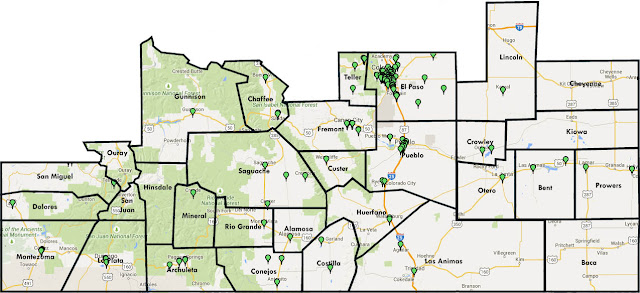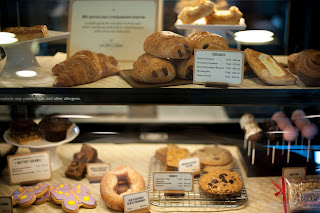We have a service area of 52,000 square miles, so transportation requires a lot of planning. We have an amazing staff of eight truck drivers that collectively travel more than 330,000 miles each year. All of our trucks are refrigerated so they can safely transport perishable food items. They have established routes that are planned in collaboration with our Programs and Agency Relations teams to ensure efficiency and effectiveness. Their routes are planned so that week one, two, three, and four are the same from month-to-month so that our partner agencies can plan their food distribution schedules accordingly.
Three of these drivers are called over-the-road drivers, and they deliver large quantities of food to our partner agencies throughout our entire service area. Their jobs are primarily delivery, although they will pick up loads of produce from local farmers on their way back to our warehouse.
We also have five local drivers. Three of these drivers are based out of our Colorado Springs warehouse, and two are based out of our Pueblo facility. The primary role of these drivers is to pick up donations from local food donors, such as King Soopers, Safeway, and Albertsons; although they do provide some deliveries to our local partner agencies as needed.
Mobile Food Pantries are also worked into our drivers’ schedules. We conduct 200 Mobile Food Pantry distributions each year in areas where few other agencies exist or existing agencies do not have the capacity to distribute large quantities of food.
Many of our local partner agencies in El Paso County come to pick up their food at our Colorado Springs warehouse. Likewise, local partner agencies in Pueblo County pick up their food directly at our Pueblo facility. We have a few partner agencies, from places like Cañon City, that make the trek to pick up their food, but most outlying partner agencies receive deliveries from our over-the-road drivers.
We use a system called Agency Express so that our partner agencies can see a live-inventory of what we have available every day, which can vary greatly not only from one day to the next, but throughout the course of each day. They order this food on a first-come-first-served basis for either pick-up or delivery, and our warehouse professionals put their orders together. Our partner agencies also use Agency Express to schedule time to come in and select reclamation food that our local drivers have picked up on their retail store donation routes. For outlying areas, reclamation food is boxed up and made available through Agency Express.
Many times we receive a product that we know there won’t be enough of to meet the demand, so we put a limit on the amount that each agency can receive. Also, some items (food received through community food-drives and frozen meat) need to be allocated based on the number of people that each agency serves, such as ½-1 pound per person served.
There is another way that our agencies receive food, which is called agency enablement. Depending on the size of the food donations from local stores, it sometimes makes more sense for us to create direct relationships with our partner agencies and the store managers. This allows our partner agencies with the capacity and desire to pick up food donations directly from the store, which decreases the time that we spend picking up smaller donations from stores within our service area and increases the amount of food that our partner agencies have to distribute to those in need. We currently have 50 agency-enabled partners that pick up food directly from Loaf ‘N’ Jug, City Market, Seven-11, and Walmart. In light of Starbuck’s recently announced goal to donate 100% of their unsold food, we will be working to establish more direct relationships between our partner agencies and local Starbucks stores.





